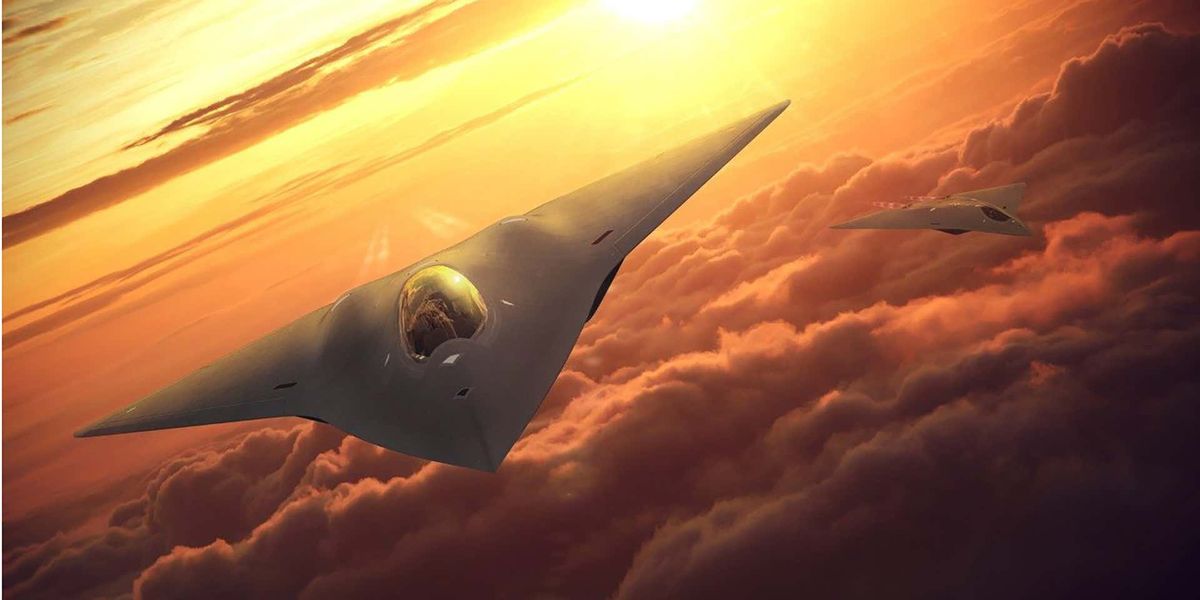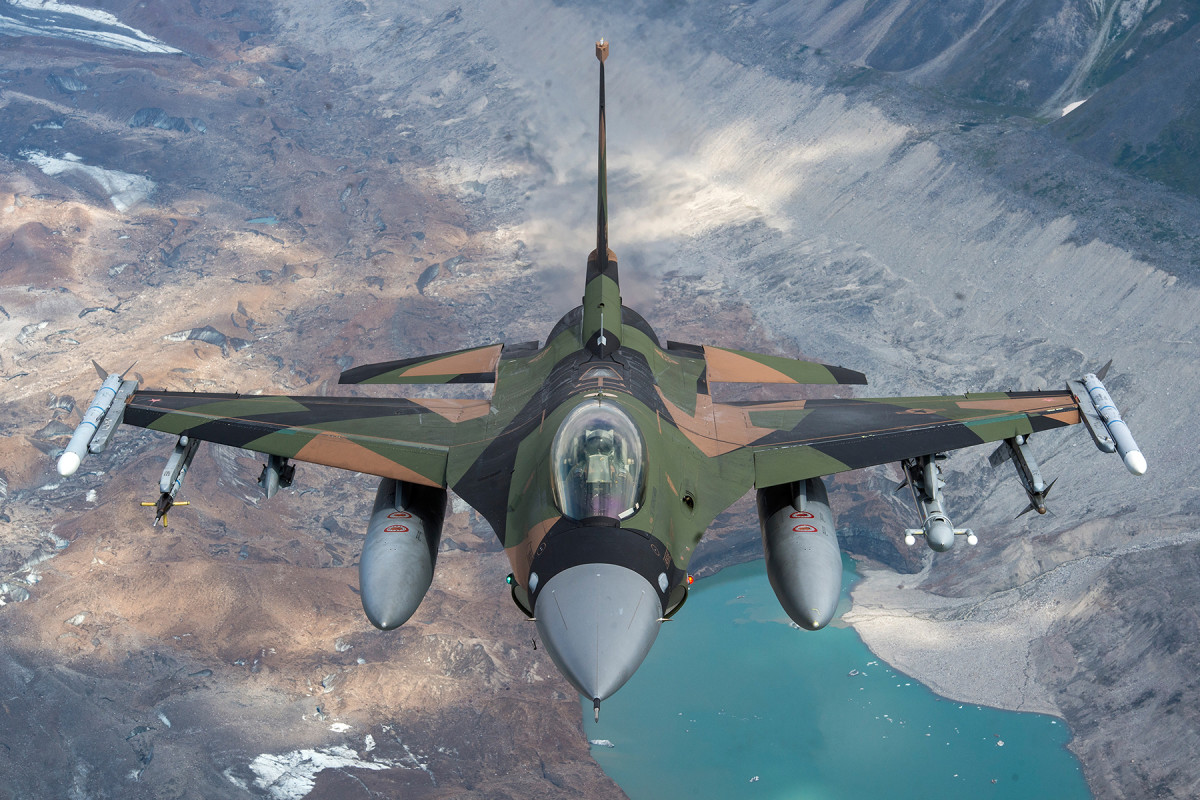The F-22’s days may be numbered, but we now have a little better view as to what they want to replace it with and why.

www.thedrive.com

New Details Emerge About The Secretive Program That Aims To Replace The F-22
The F-22’s days may be numbered, but we now have a little better view as to what they want to replace it with and why.
BY
THOMAS NEWDICK MAY 14, 2021
Lieutenant General Clinton Hinote, the Air Force’s Deputy Chief of Staff for Strategy, Integration and Requirements, has provided new details about the service’s plans for its
Next Generation Air Dominance (NGAD)program. This ‘system of systems’ aerial combat modernization effort is expected to yield, among other things, a new sixth-generation fighter jet. Hinote also provided additional information about a plan put forward earlier this week by Chief of Staff of the Air Force General Charles Brown, calling for the NGAD to replace the
F-22 Raptor stealth fighter starting in the next decade, part of a larger proposal to trim the service's fighter fleets down to just four types, which you can read about more
here.
Responsible for developing Air Force strategy and multi-domain operating concepts, Hinote gave interviews to both
Air Force Magazine and
Defense News in which he filled in some aspects of the highly secretive NGAD initiative. He also explained how the timeline for that program fits in with still-ongoing planning regarding the eventual retirement of the F-22.
Hinote, who is a former
F-16 Viper and
F-117 Nighthawk pilot, told
Defense News that, at least right now, he doesn’t anticipate replacement of the F-22 with the NGAD to begin until the 2030s, by which time the Raptor will be “a 40-year-old platform."
“We don’t have to make that decision this year,” Hinote continued. “What we’re going to want to see is, when do we press from the NGAD being a developmental program to being a production program?”
The Air Force has so far been tight-lipped about the timeline for when any aircraft developed under NGAD will enter service, although it was
disclosed last September that at least some kind of demonstrator platform for the program is already flying. In his interview with
Air Force Magazine, Hinote hinted that a second demonstrator — potentially an entirely new follow-on design — might be in some stage of production now.
“As you’re allowing that program to mature, through a spiral series, you’re designing the next platform” with new software and sensor technology, Hinote told
Air Force Magazine. He also hinted that new iterations could come along every five to eight years.
That kind of rapid technology turnover is something that was espoused by Will Roper, the former Assistant Secretary of the Air Force for Acquisition, Technology, and Logistics, in what was termed the “Digital Century Series,” an ambitious goal
you can read more about here. Apart from this concept, the Air Force is also working on the Low Cost Attritable Aircraft Platform Sharing (LCAASP) program that aims to deliver two attritable/reusable UAV variants that will be “derived from a common system architecture that share core system features and are tailored to perform specific missions, similar to
Valkyrie’s modular approach,” in the words of a
policy paper from the Mitchell Institute, an airpower think tank. This is part of the Air Force’s studies into creating scalable aircraft families based around common components.
However, it also seems likely that the Air Force has not settled on to what degree NGAD will be based around a manned platform or platforms. Hinote told
Defense News that the program includes manned, unmanned, and optionally manned segments but suggested that not all of those might go forward into operational service. “Frankly I think we’re going to explore all of those to go forward to see exactly what the best use of this is,” he said. Meanwhile,
Air Force Magazine reported that NGAD would definitely include an optionally manned platform based on its own conversation with Hinote.
Of course, with the system of systems approach, it’s also possible that Hinote was specifically referring here to a platform earmarked to replace the F-22 since it seems almost certain that NGAD will incorporate at least some unmanned platforms.
Exactly how the manned/unmanned conundrum plays out, Hinote did tell
Air Force Magazine that, more generally, he expects autonomous aircraft to be used increasingly as force multipliers and referenced the recent first flight test of an initial version of the
artificial intelligence-driven “computer brain” being developed under
the Skyborg program. It’s worth noting, too, that the Air Force has publicly talked about Skyborg initially being intended to support operations of
loyal wingman-type semi-autonomous drones, after which the goal is to insert this technology into a more robust, fully-autonomous unmanned combat air vehicle (UCAV). There has also been some discussion already about integrating some of this autonomous technology into manned aircraft, which could potentially present a pathway to turning existing or future manned types
into optionally piloted ones.
While it might seem somewhat late in the day to be considering such fundamental issues as whether or not NGAD will have a human pilot, Hinote provided an assurance that the program is progressing well, both in terms of the work made by the (unnamed) prime contractors and the various subcontractors. He pointed to digital
design concepts and systems integrationas being the cornerstones of the program and ensuring that it will be fielded in a timely manner — presumably sometime in the 2030s, based on his other statements.
But, if NGAD fails to live up to all that promise and is not so quick to deliver hardware to frontline units, Hinote remains confident that the F-22 can fill the gap until its successor becomes available.
It may be a “great airplane,” in Hinote’s words but the Raptor is increasingly becoming obsolescent for the challenging types of mission that are likely to be required in a new era of confronting near-peer adversaries, like China. Hinote provided the example of a hypothetical
Chinese invasion of Taiwan in the mid-2030s as the kind of scenario in which the F-22 would no longer pass muster. Hinote explicitly pointed to the threat posed by the Chinese
J-20 stealth fightercombined with
advanced air-to-air missiles, suggesting this is seen as a true game-changer in the Asia-Pacific theater.
As we have
examined before, the F-22 is hamstrung by its limited range and its limited magazine depth — the amount of armament it can carry on a single sortie, a problem that it shares with the
F-35. Hinote also identified this issue. With that in mind, it is interesting to hypothesize how the NGAD might address the problem of magazine depth. This and many other factors suggest the NGAD fighter component will be larger than the F-22, while also exploiting
broadband low-observability, likely being a tailless design. Another, perhaps complementary, option would be to employ the new fighter in conjunction with drones used in swarms, or individually as either sensor trucks or weapons trucks.
Furthermore, the F-22 is a small, maintenance-intensive fleet making it expensive to operate and it’s also increasingly under threat from advanced air defense systems, Hinote pointed out. Like the
B-2 stealth bomber, another ‘silver bullet’ fleet, the Raptor is suffering, too, from the
vanishing-vendor effect: a diminishing stock of parts provided by now-defunct original equipment manufacturers.
To help keep the F-22 at the cutting edge, Hinote confirmed that an upgrade program would be requested under the Fiscal Year 2022 budget, addressing sensors and undisclosed new air-to-air missiles, and, beyond that, perhaps a service-life extension program. These new weapons will “be used across the entire fighter inventory,” according to
Defense News, suggesting that Hinote was referring to the
AIM-260 Joint Air Tactical Missile (JATM). This is expected to be broadly similar in size to the current
AIM-120 AMRAAM, to permit internal carriage in the F-22 and F-35, but will offer a greater range than even the AIM-120D, to keep pace with
Chinese and
Russian missile developments.
There is, of course, also a political edge to these discussions, in particular the need to leverage the government to fund the NGAD program. Hinote admitted to
Air Force Magazine that the forthcoming budget request will include a “large … commitment” to NGAD. Leading officials talking down the future credibility of the F-22 will only help support these funding ambitions. In the final Fiscal Year 2021 budget, it’s notable that funds for the NGAD were cut slightly.
Aside from the F-22 and NGAD scenario, one other item of interest that came up in Hinote’s
Defense News interview was the suggestion that the Air Force could upgrade its existing
F-15E Strike Eagles to the same standard as the latest F-15EX, the first of which was
recently delivered to the service. That could potentially parallel the kind of remanufacturing program, that Saudi Arabia adopted when upgrading its existing F-15S jets to the
advanced F-15SA standard. The alternative for the Air Force would be to buy new F-15EX aircraft to replace them, a proposal that’s been
doing the rounds for some time now.
Either way, it seems the
hard-worked F-15E community, often the first choice for
strike missions around the globe is receiving some kind of new or drastically revamped equipment.
As we have spoken about in the recent past, all these plans are yet to be formalized, and discarding the F-22 ‘early’ would likely face the wrath of lawmakers. There’s no doubt, however, that interesting times for the Air Force’s tactical aviation fleet lie ahead.
Contact the author: [email protected]





